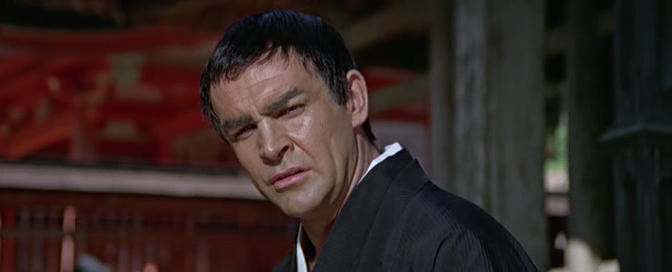One of the odder legal stories of 2008 may have been a certain lawsuit against United Airlines by a certain Yoichi Shimamoto and his wife Ayisha. FlyerTalk had a big thread on it. Here’s a quick summary of what happened:
The Shimamotos were on a United flight from Japan to the US in business class, where alcohol is free and generally quite readily dispensed. Mr. Shimamoto became thoroughly trashed on the flight, and apparently a little belligerent. After deplaning at their first stop in San Francisco, while the couple was waiting in the immigration line, they got into an altercation of some sort and Mr. Shimamoto started beating his wife in public. He was arrested for assault, tried and convicted, and sentenced to probation in California followed by deportation to Japan.
Then it gets really weird. First, Mrs. Shimamoto successfully petitioned to have Mr. Shimamoto’s probation transferred to Florida, where Mrs. Shimamoto had a house. Then, with Mr. Shimamoto safely parked somewhere around Orlando, the couple sued United in Florida for Mrs. Shimamoto’s physical injuries and Mr. Shimamoto’s legal expenses, claiming that United should not have served more alcohol to Mr. Shimamoto while he was obviously wasted out of his mind. After a couple of weeks of spirited online discussion between armchair pundits, the Shimamotos withdrew their case. Perhaps United offered a settlement of some kind–the news reports do not say.
* * *
Although the gut reaction of most is to say “Ah-ha! Frivolous American litigiousness strikes again!” it’s actually quite easy for a booze server to incur tort liability because of their drunken patrons’ malfeasance. Every US state has some sort of “dram shop act” which imposes this sort of liability. Sales to minors are pretty much universally a basis for seller liability, and sales to the visibly intoxicated can lead to liability in many states.
Extending this general concept to an airline is not that illogical, although perhaps inconsistent with the fact that airplanes don’t really fall under a particular state’s jurisdiction while in flight (although the airlines themselves, which are tied firmly to the ground, might). Another hurdle is that most international flights fall under the Warsaw Convention, which caps the carrier’s liability for physical or property damage to passengers.
Of course, the real oddity in the Shimamotos’ case is that it wasn’t just the battered wife who sued–it was also her husband, who wasn’t really hurt except to the extent that he got himself in legal trouble. Still, the question of making airlines responsible for cutting off their patrons is an interesting one, and it may someday be solved in court by a more credible group of litigants.
* * *
A few posters at FlyerTalk have raised the question of whether Japanese law (and, by extension, society) condones or even encourages the practice of passing blame to the liquor or its server.
To some extent, this idea is actually getting traction in Japanese law, at least as far as The State is concerned. Anyone who eats out regularly in Japan has probably noticed the growing number of establishments that proudly state they will not serve alcohol to customers who come by car–this is largely because Japan’s revised Road Traffic Law of 2007 makes it a criminal offense for a restaurant or bar to provide alcohol to a person “at risk of” drunk driving. Another example is serving booze to minors, a crime under the “Fuzoku Eigyo” Act (which governs the nightlife industry generally) which can land the proprietor in jail.
Civil liability between private parties is a different story, though. It’s pretty well known that Japan is not a very litigious society–depending on which expert you ask, this is either because of cultural reasons (aversion to argument) or economic reasons (filing fees in Japanese courts are based on claim amount, so big lawsuits on a marginal basis are uneconomical to file, whereas the US system of charging flat filing fees encourages outlandish claims that can be whittled down through negotiation). So it shouldn’t come as much of a surprise that suing the bar for the drunkard’s acts has been less of a question in the Land of the Rising Nama.
It does come up, though. The scariest case for the bartender must be a 2001 case in Tokyo (noted in the Japanese Wikipedia article on drunk driving) where a group of friends drank for seven hours straight, got in a car and ran over a 19-year-old girl. The driver got seven years in prison, but his friends were found civilly liable to the tune of 58 million yen for having the guy drink while they knew he was getting behind the wheel. But in a more distant commercial context, there seems to be some reluctance to extend liability like this. Take one case in Saitama last year where families of victims of a drunk driving spree demanded that the barkeep’s criminal responsibility was as great as the driver’s. The judge handed down a suspended sentence for the alcohol providers, claiming that “there is no evidence that [they] expected the driver to act so recklessly (運転者の常軌を逸した暴走行為まで予見していた証拠はない).”
What’s the conclusion? Japan has a looser attitude toward alcohol in many ways (when’s the last time you’ve been carded here?) but its system can be pretty harsh on people who completely ignore its dangers. Thankfully, Mr. Shimamoto wouldn’t have much legal support under either system: the only tangible difference between the two countries in his case is that he can actually afford to waste the court’s time in the US.







